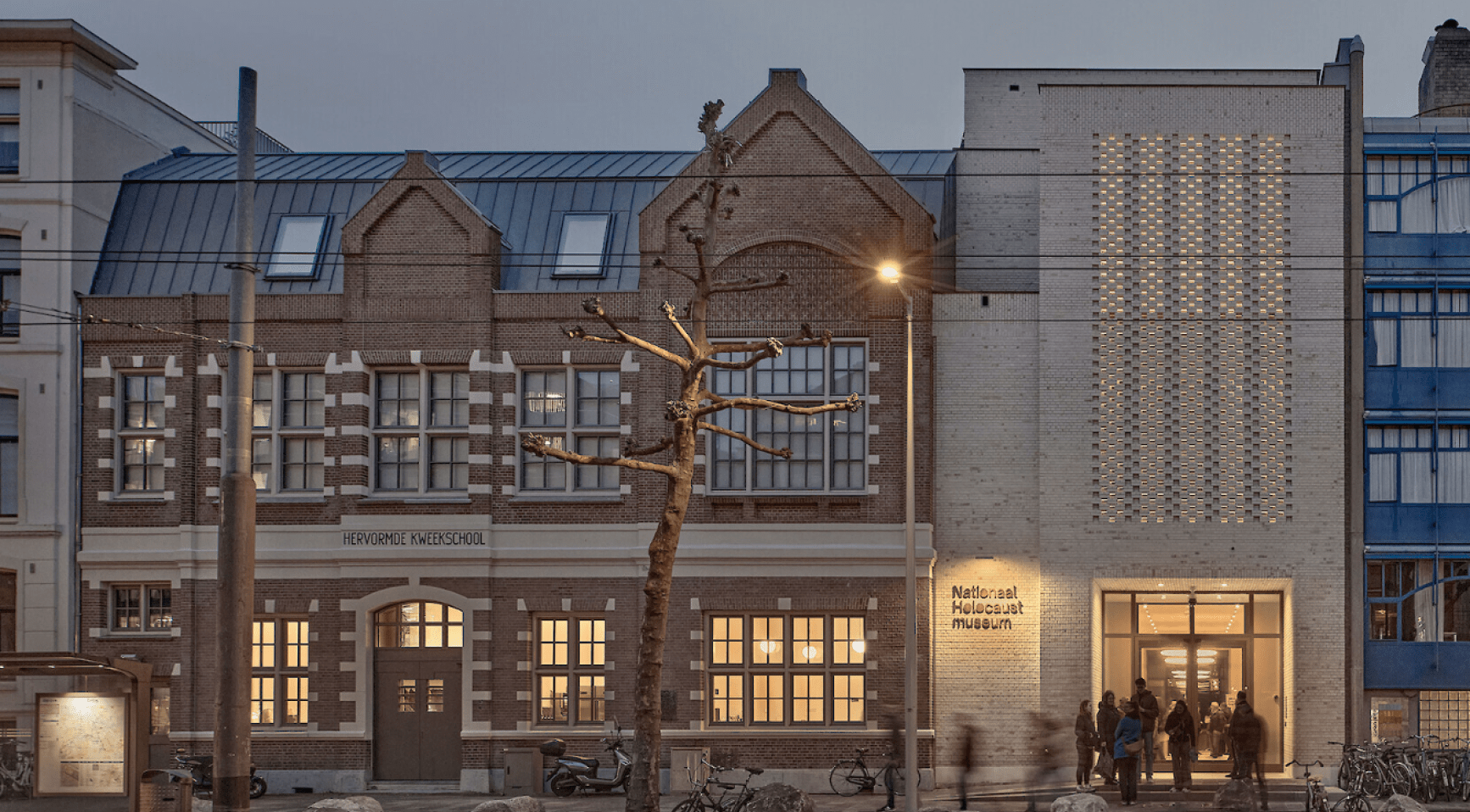The National Holocaust Museum in Amsterdam was unanimously chosen as the Best Building of the Year 2025 by the jury of the architecture sector organization BNA. The jury praised the architectural firm behind the museum, Office Winhov, for using the architecture of the museum to tell the atrocities of WWII as well as possible.
“The National Holocaust Museum creates space for telling stories bout the Second World War. The current wars once again demonstrate the importance of knowledge about this history, and the need to reflect on it and enter into dialogue with each other,” the jury said.
According to the jury, Office Winhov managed to tell that story as well as possible by making use of architecture. “It shows courage to bring together the Schouwburg, the former school, and the entrance building in a museum experience. This also applies to the choice to change relatively little about the Schouwburg, while adding a striking entrance building.”
The jury described the National Holocaust Museum as a layered project, combining urban restoration, new construction, exhibition, and stories to create a relationship between buildings and the streets they are on. “Everything has been done in an exemplary manner. The careful integration, the craftsmanship, the control of materials and light, the good interplay between building and exhibition, the sublime collaboration between spatial disciplines; these are the qualities that the jury wishes for every construction project.”
Audience Award: Kantoor vol Afval in Katwijk
BNA also allowed the public to vote for their favorite building of the year. The winner of the Audience Award for 2025 is Kantoor vol Afval (Office full of Waste) in Katwijk by the architectural firm Popma ter Steege, commissioned by the government real estate manager Rijksvastgoedbedrijf. According to the jury, the Rijksvastgoedbedrijf set a new standard for the renovation of government offices.
The building is located on the former Valkenburg airfield, which will eventually be turned into a residential area. Until then, the former defense buildings are maintained using experimental circular renovation methods and rented out. The architects worked with elements from the existing buildings, supplemented with second-hand and biobased materials. The approach proved 10 percent more expensive than standard renovation, though that difference is expected to shrink as raw materials become scarcer and sustainability requirements increase.
“This project shows the importance of a government that takes its role in mapping out a sustainable course,” the jury said. “Moreover, this approach provides architectural added value; the character of the building has been preserved and enriched with stories of reused materials, such as the acoustic panels from the old conservatory in The Hague.”
Incentive Award: Two residential buildings in Hattem
BNA gave its Incentive Award, awarded to up-and-coming talent, to the project Two residential buildings in Hattem by the architectural firm Groothuijse de Boer. According to the jury, the project is part of a large social task of providing more housing while coping with vacancy in the shopping streets.
“Bureau Groothuijse De Boer has integrated the buildings exceptionally well into the historic town, the style and form are typical of Hattem, serving the location, but with a contemporary contribution, and exceptionally charming.” The jury hopes that more local project developers and architects will take this approach.
